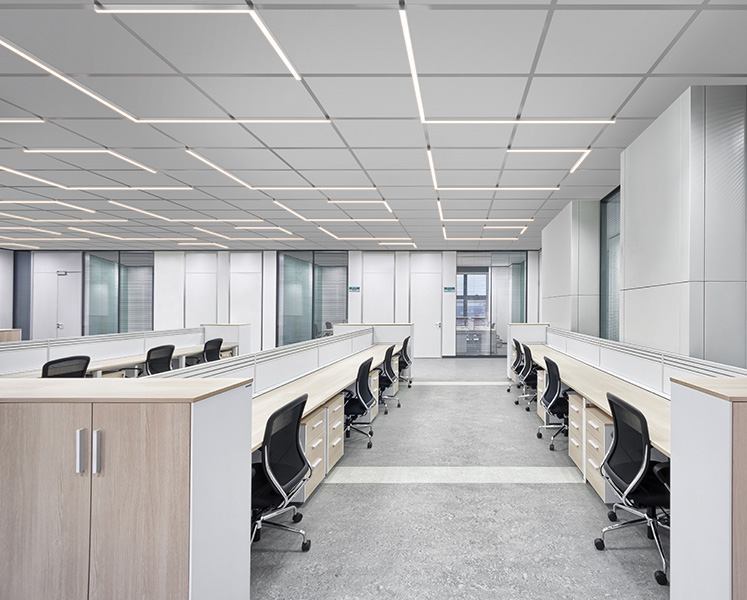T Bar ceilings lighting offers versatile and stylish illumination options for various spaces, from offices to residential areas. Understanding how to optimize T Bar ceiling lighting can transform your environment into a well-lit and visually appealing space. This guide explores the benefits, installation methods, and design considerations for T Bar ceiling lighting, ensuring you make informed decisions to illuminate your space effectively.

Understanding T Bar Ceiling Lighting
T Bar ceiling lighting refers to lighting fixtures that are specifically designed to integrate with T Bar suspended ceiling systems. These systems feature a grid of metal channels that support ceiling tiles or panels, providing a convenient space for recessed or surface-mounted lighting installations. T Bar ceiling lighting is popular for its seamless integration and ability to enhance the overall ambiance of a room.
Benefits of T Bar Ceiling Lighting
Choosing T Bar ceiling lighting offers several advantages:
- Aesthetic Appeal: The sleek and modern design of T Bar lighting fixtures complements contemporary interiors, enhancing the overall aesthetic appeal of the space.
- Space-Saving: T Bar lighting fixtures can be recessed into the ceiling, saving valuable floor and wall space compared to traditional lighting options.
- Versatility: These lighting systems support various types of light fixtures, including LED panels, troffer lights, and recessed downlights, allowing for customizable lighting solutions.
- Energy Efficiency: LED options are energy-efficient, consuming less power while providing bright and consistent illumination.
- Easy Maintenance: T Bar ceiling systems allow easy access to lighting fixtures for maintenance or upgrades, reducing downtime and costs associated with repairs.
Types of T Bar Ceiling Lighting Fixtures
Explore the different types of T Bar ceiling lighting fixtures available:
- LED Panel Lights: These slim and efficient lights provide uniform illumination across the ceiling surface, ideal for offices and commercial spaces.
- Troffer Lights: Troffers are rectangular or square-shaped light fixtures that fit into T Bar ceiling grids, offering both direct and indirect lighting options.
- Recessed Downlights: Recessed downlights are installed flush with the ceiling, providing focused illumination without protruding into the room space.
- Surface-Mounted Fixtures: These fixtures are mounted directly onto the T Bar ceiling grid, offering flexibility in positioning and design.
Design Considerations for T Bar Ceiling Lighting
When planning T Bar ceiling lighting installation, consider the following design factors:
- Lighting Layout: Determine the optimal placement of fixtures to ensure even distribution of light and minimize shadows.
- Light Color Temperature: Choose between warm, neutral, or cool light tones based on the room’s function and ambiance preferences.
- Dimming Options: Incorporate dimmable fixtures for adjustable lighting levels, enhancing energy savings and creating different atmospheres.
- Lighting Controls: Integrate lighting controls such as sensors or timers to automate lighting based on occupancy or daylight levels, improving efficiency.
Installation of T Bar Ceiling Lighting
Follow these steps for installing T Bar ceiling lighting fixtures:
- Plan and Layout: Create a lighting layout plan, indicating the placement of fixtures and ensuring compatibility with the T Bar ceiling grid.
- Prepare the Grid: Verify the integrity of the T Bar ceiling grid and ensure it can support the weight and dimensions of the chosen lighting fixtures.
- Install Fixtures: Depending on the type of fixture, follow manufacturer instructions for recessed or surface-mounted installation into the T Bar grid.
- Connect Wiring: Safely connect electrical wiring to each fixture, adhering to local building codes and safety standards.
- Test and Adjust: Once installed, test each fixture to ensure proper functionality and adjust as needed for optimal lighting performance.
Maintenance and Upkeep
Regular maintenance ensures longevity and performance of T Bar ceiling lighting:
- Clean fixtures and diffusers periodically to remove dust and maintain light output.
- Inspect wiring and connections for signs of wear or damage, addressing any issues promptly.
- Upgrade to energy-efficient LED bulbs or fixtures to reduce energy consumption and operating costs.
Conclusion
T Bar ceilings lighting offers versatile and efficient lighting solutions for various indoor environments. By understanding the benefits, types, design considerations, and installation methods outlined in this guide, you can make informed decisions to enhance your space with modern and effective lighting solutions. Invest in T Bar ceiling lighting to transform your environment into a well-lit and visually appealing space that meets your functional and aesthetic needs.